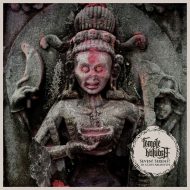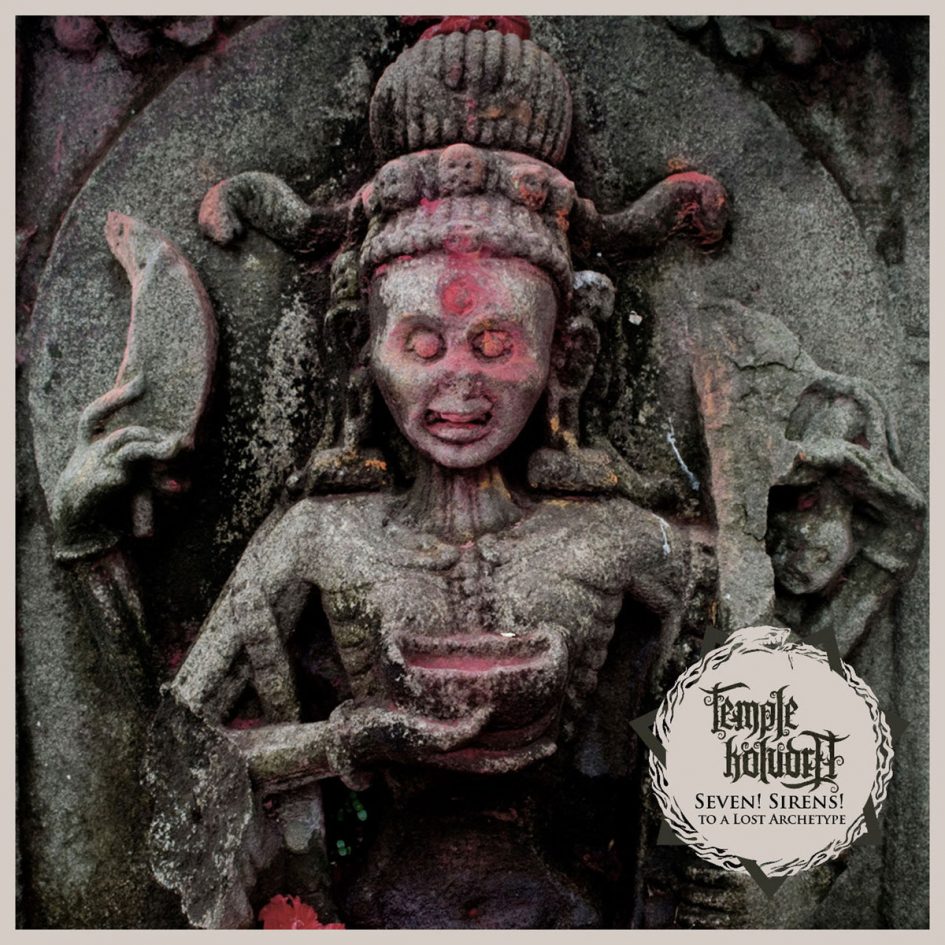 Although founded in 2010, Temple Koludra are a relatively young band regarding releases and fan base. However, the people behind it, though preferring to remain unknown, are very likely experienced musicians. The album at hand, the band’s first after two EPs, is simply too good, too sophisticated, too concise, too dedicated to have been crafted by someone new to music. Everything about Seven! Sirens! To A Lost Archetype tells you that whoever created it knows a lot about music, and not only about making music, but also about music theory and history, and about the role of music in spirituality.
Although founded in 2010, Temple Koludra are a relatively young band regarding releases and fan base. However, the people behind it, though preferring to remain unknown, are very likely experienced musicians. The album at hand, the band’s first after two EPs, is simply too good, too sophisticated, too concise, too dedicated to have been crafted by someone new to music. Everything about Seven! Sirens! To A Lost Archetype tells you that whoever created it knows a lot about music, and not only about making music, but also about music theory and history, and about the role of music in spirituality.
One of the things that make the album so mature is that it can be enjoyed on many levels: you can simply revel about the beautiful fierceness of the music and the musicianship involved in creating it; but if you want to dig deeper and engage with the album’s governing concept and the philosophy behind it, there is plenty to discover and obsess about. Seven! Sirens! To A Lost Archetype will provide premium food for thought and ears for quite some time (the lengthy title might be one of its rare flaws).
The first thing that becomes apparent when you listen to the album is that the band doesn’t concern themselves with fitting into a genre box. While their sound can be placed somewhere between black metal and death metal, what’s obviously more important than ticking genre boxes is the realization of a vision. And quite an ambitious one is it. They aim for nothing less but “to create a gateway for the transition between the artificially polished modern spirit and the raw, chaotic current of the primordial consciousness that rests in all things and can never be fully erased.” (Temple Koludra, bandcamp). And before you discard that as pretentious tosh, give the album a listen.
I might be mistaken, of course, but the album doesn’t appear to be the product of jamming around, making some songs and then coming up with a fitting framework for the music. The concept, as quoted above, came probably first. Black metal and death metal with their usual ingredients were chosen as means of expression, because they were considered most effective in achieving the selected aim.
Just like the music doesn’t fit neatly into genre boxes, neither does the album’s theme. Instead of common references to Northern mythology or Satanism, references to India, Hinduism and Buddhism abound. These spiritual traditions are thousands of years older than Northern or Judo-Christian ones and therefore in line with going back to the roots. And not only are they older, they are much more philosophical and abstract. Similar to their obvious role models Deathspell Omega, Temple Koludra are into metaphysics.
The album cover features a Hindu/Buddhist female deity, and some of the song titles refer to concept or spiritual objects from these traditions. “Namarupa”, for example, is the unity of the physical and the psychological aspects of a human being, while “Trimurti” is the supreme triple deity in Hinduism, representing birth, life and death, or creation, maintenance and destruction.
The Asian theme has been transferred into the music through the inclusion of traditional instruments and Asian-sounding tunes. The undercurrent of Asian instruments and melodies in the ferocious black/death metal, sometimes subtle, sometimes pronounced, has a special beauty, and really takes the listener to uncharted terrains.
Trimurti opens the album, and the band wastes no time on a lengthy intro. There are no spherical tunes to help you transition, to soften the blow or to prepare you for what lies ahead. Instead, there are only a few seconds of electrical, pulsing noise combined with the sound of torrential rain. After that you are sucked into a breath-taking vortex of sound, or, to put it differently, taken on a dive straight into the abyss.
The inclusion of the torrential rain sounds, quite common in the genre, makes sense for once, since the monsoon is an important aspect of life in India and other parts of Asia. The monsoon, in a way, initiates the “chaotic current of the primordial consciousness” and the vortex of sound.
My favourite track on the album and a good starting point if you want to check out the band’s sound is This Diadem Will Last. It offers a somewhat easier access, because the overall tempo is slower. The track includes slightly more synthesizer sounds, and the soundscape is governed by a recurring sludgy/doomy groove. It’s a bit more palpable than the rest of the album, reminding me of Yeruselem, the new Blut aus Nord project. Distorted vocals, synthesizer sounds, glorious double kick drumming, and the ever-present Asian-sounding tunes combine to a sublime piece of music. Excellent.
Seven! Sirens! To A Lost Archetype is an ideal example for the beauty you can find in underground metal. Seemingly out of nowhere, and completely unexpected, you can come across something different and dedicated, something, that does not care to fit a framework. If you decide not to check the album out, just because the band are not so well known and somewhat different, that’s entirely your loss.
(9/10 Slavica)

Leave a Reply